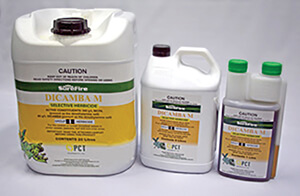From Jerry
As we all know, keeping honey bees not only alive but healthy and contributing to your management goals is tough and tougher for new beekeepers who haven’t learned that beekeeping is a visual sport. You have to be able to see, compare and contrast and that requires sampling and surveying and then having the resources to be able to understand what you have found. The Ohio State Beekeepers Association, http://www.ohiostatebeekeepers.org/ has stepped up to help all of us.
One of the many questions that we keep hearing from new beekeepers is “What exactly am I looking for?” when they inspect their hives. That is a really good question. How can you identify pests and diseases, and keep track of the health of the hive if you do not know what to look for, and what tools to use?
The OSBA ADK (Apiary Diagnostic Kit) Committee developed a portable kit complete with tools and a full-color laminated field guide to help identify issues, and provide a tracking form for each hive visit.
The kit contains: 5 gallon white bucket with lid, Fresnel Lens, Tweezer, LED Flashlight, UV Flashlight, Capping Scratcher, Sugar Shake Jar and Screen, Rubber band, Coffee Filters, Drone Comb Frame, Queen Marking Tube, Queen Marking Pen, Dry Erase Marker, Measuring Cup, Hive Beetle Blaster, Hive Beetle Jail, Microfiber Towel, and 34-page full color laminated spiral bound manual.
The goal is to increase beekeeper confidence in hive management by providing tools to help monitor and diagnose changes in the hive before they reach a critical stage and the hive dies.
Q Dicamba Toxic to Bees?

Thank you,
Robert Hough
Beaver Falls, PA
A
Robert, I found this that you may find of interest:
Terrestrial Invertebrates
- Dicamba’s toxicity to honey bees ranges from moderately toxic to practically non-toxic, based on U.S. EPA values.67
- When researchers fed Dicamba to newly emerged honey bees (Apis mellifera) at concentrations up to 1000 ppm, no significant difference in survival was observed.68 The acute contact 48-hour LD50 for Dicamba to honey bees was greater than 90.65 μg/bee and the acute oral LD50 was 3.6 μg/bee.69
- Researchers evaluated the toxicity of Dicamba to worker honey bees when exposed to Dicamba on contact or by ingestion. Less than half of the bees died at all doses tested. The contact LD50 was greater than 100 μg/bee and the oral LD50 was greater than 10 μg/bee.70
67Design for the Environment Program Alternatives Assessment Criteria for Hazard Evaluation; U.S. Environmental Protection Agency, Office of Prevention, Pesticides, and Toxic Substances, U.S Government Printing Office: Washington, DC, 2010; p 26.
68Morton, H. L.; Moffett, J. O.; Macdonald, R. H. Toxicity of Herbicides to Newly Emerged Honey Bees. Environ. Entomol. 1972, 1, 102-104.
69Effect of 3,6-Dichloro-2methyoxybenzoic acid on Apis mellifera Mortality; U.S. Environmental Protection Agency, Office of Prevention, Pesticides, and Toxic Substances, Office of Pesticide Programs, Environmental Fate and Effects Division, U.S. Government Printing Office: Washington, DC, 2000.
70Stevenson, J. H. The Acute Toxicity of Unformulated Pesticides to Worker Honey Bees (Apis mellifera L.). Plant Pathol. 1978, 27 (1), 38-40.
http://npic.orst.edu/factsheets/archive/dicamba_tech.html
So, to me it looks like it could be moderately toxic at high levels, but that unless sprayed on the bees directly, which likely isn’t going to happen in most agricultural settings, Dicamba is not highly toxic to bees. But, and there is always a but, nothing is perfect and it is essential for those using Dicamba or any other pesticide to read and follow label instructions.
Q Red Clover As A Nectar Source for Honey Bees?
I hope this finds you doing well. I just wanted to get your idea on something I’ve been puzzling over. About a month ago I placed 4 hives on a property adjacent to a 35 acre hay field. One of the prominent hay crops is red clover and I thought I might be able to make some honey from it when it blooms. It has been in bloom now for several weeks and every time I visit my apiary, I walk the field a bit looking for honey bees on the flowers. The bumble bees and butterflies love it, but I have yet to see a honey bee on red clover. Could it be the flower is too “deep” for honey bees to reach the nectar? The flowers obviously produce nectar because other pollinators are visiting them. There is not much else blooming in the area right now, so it would seem that if the nectar were accessible to the bees, they would go for it but maybe there is something else I’m not thinking of.
Jeffrey Dettweiler
A
You are absolutely right Jeffrey. The flower heads on many clovers are made up of separate individual flowers called ‘florets’. On red clover, Trifolium pratense, (not to be confused with crimson clover, Trifolium incarnatum, which bees do work and is mostly grown in the southern states) the florets are often long and deep as the preferred pollinators are larger bumble bees. Their tongues are longer and can reach to the bottom of the floret and access the nectar. Honey bees are smaller and their tongues are shorter and often can’t reach the nectar in many deep florets like red clover. The Bumbles are happy.☺
If you are a beekeeping history buff, you might be interested in …


